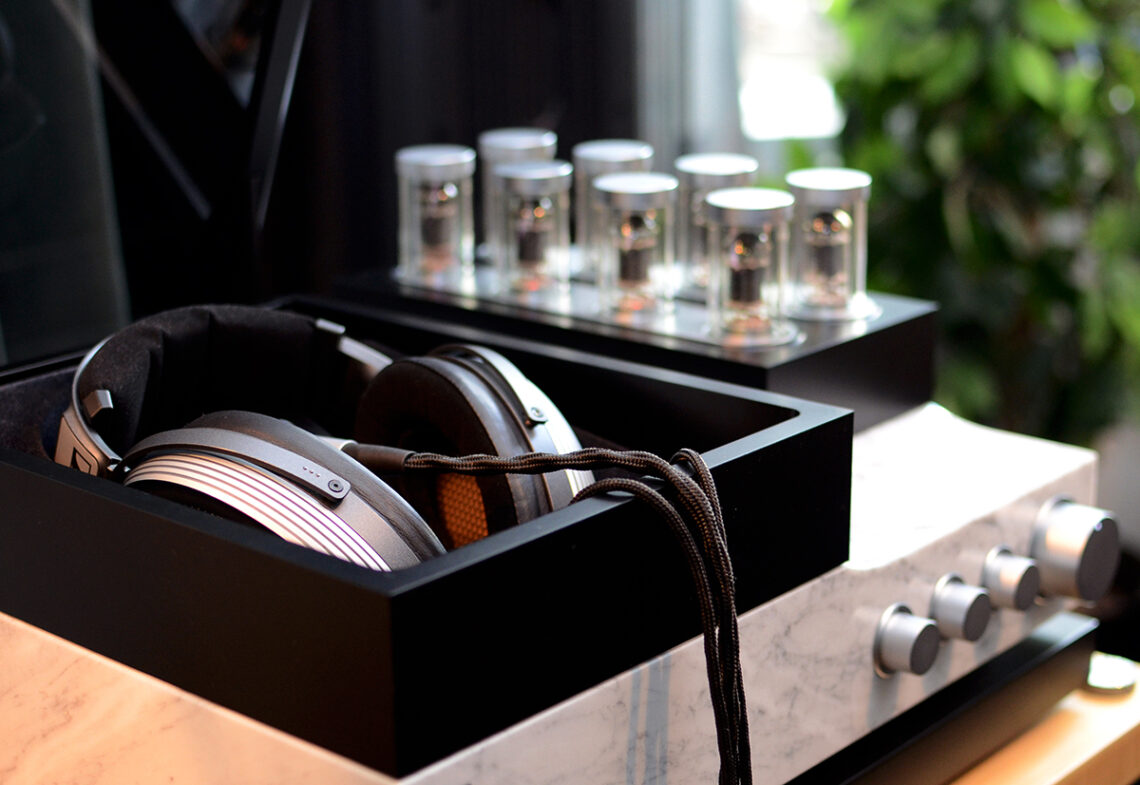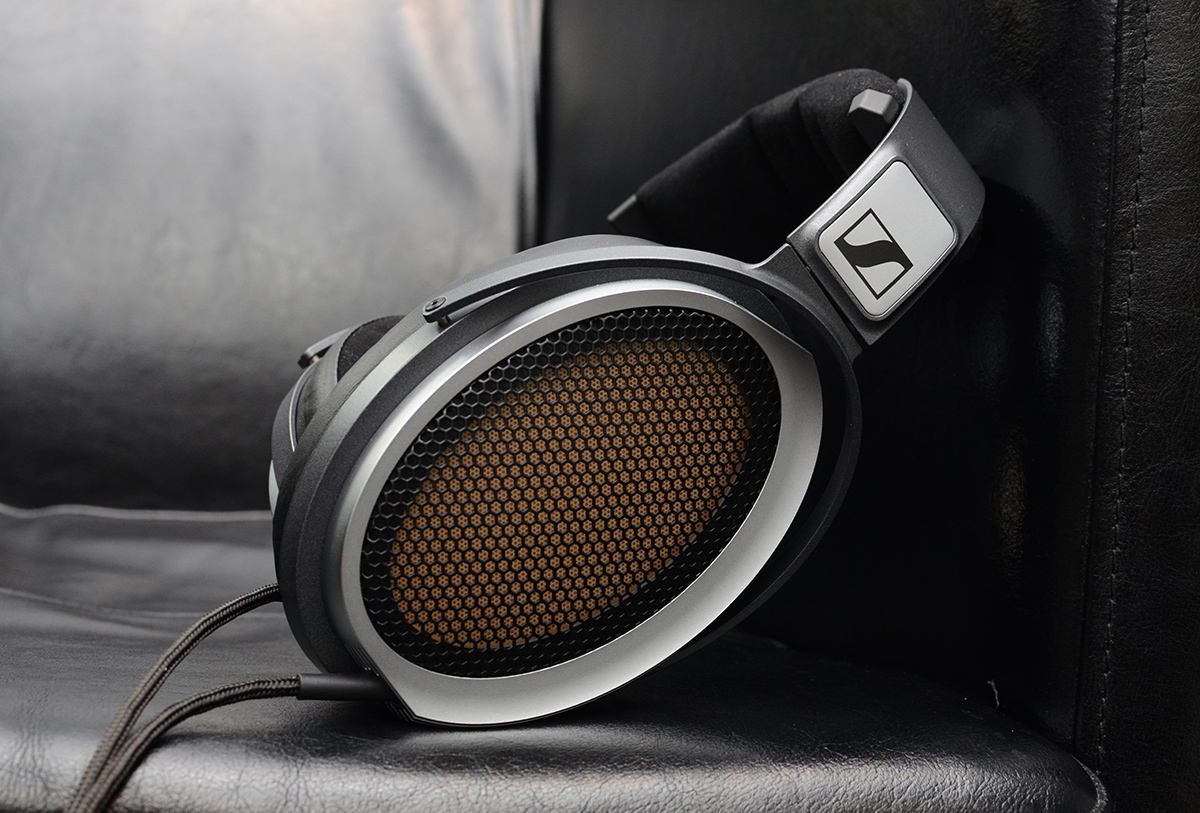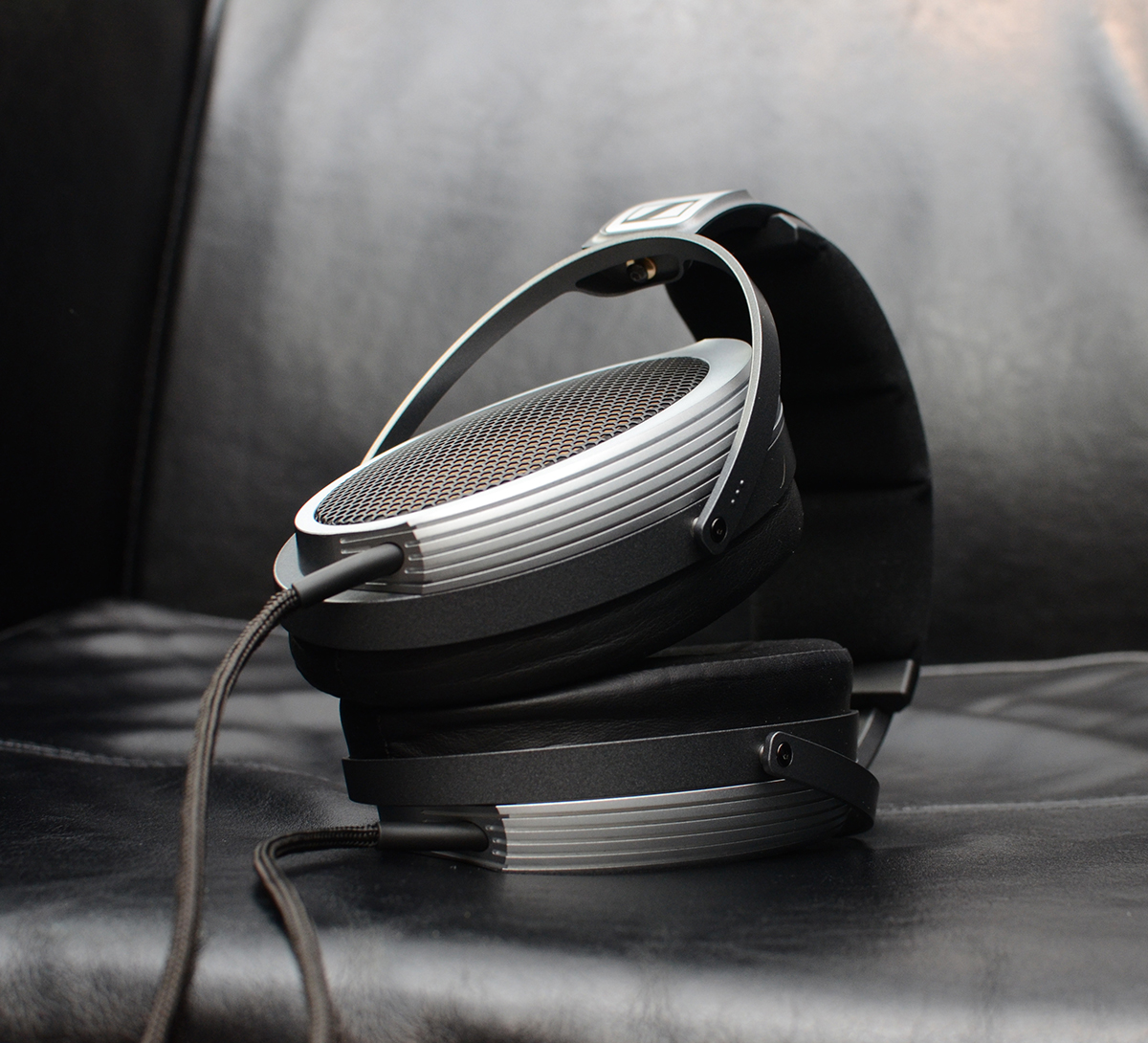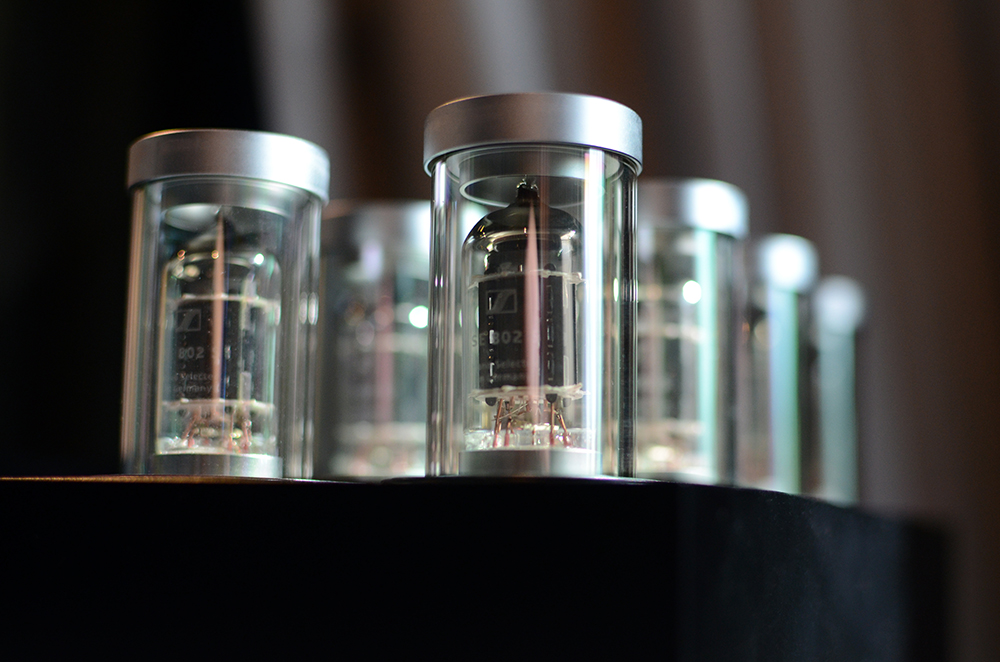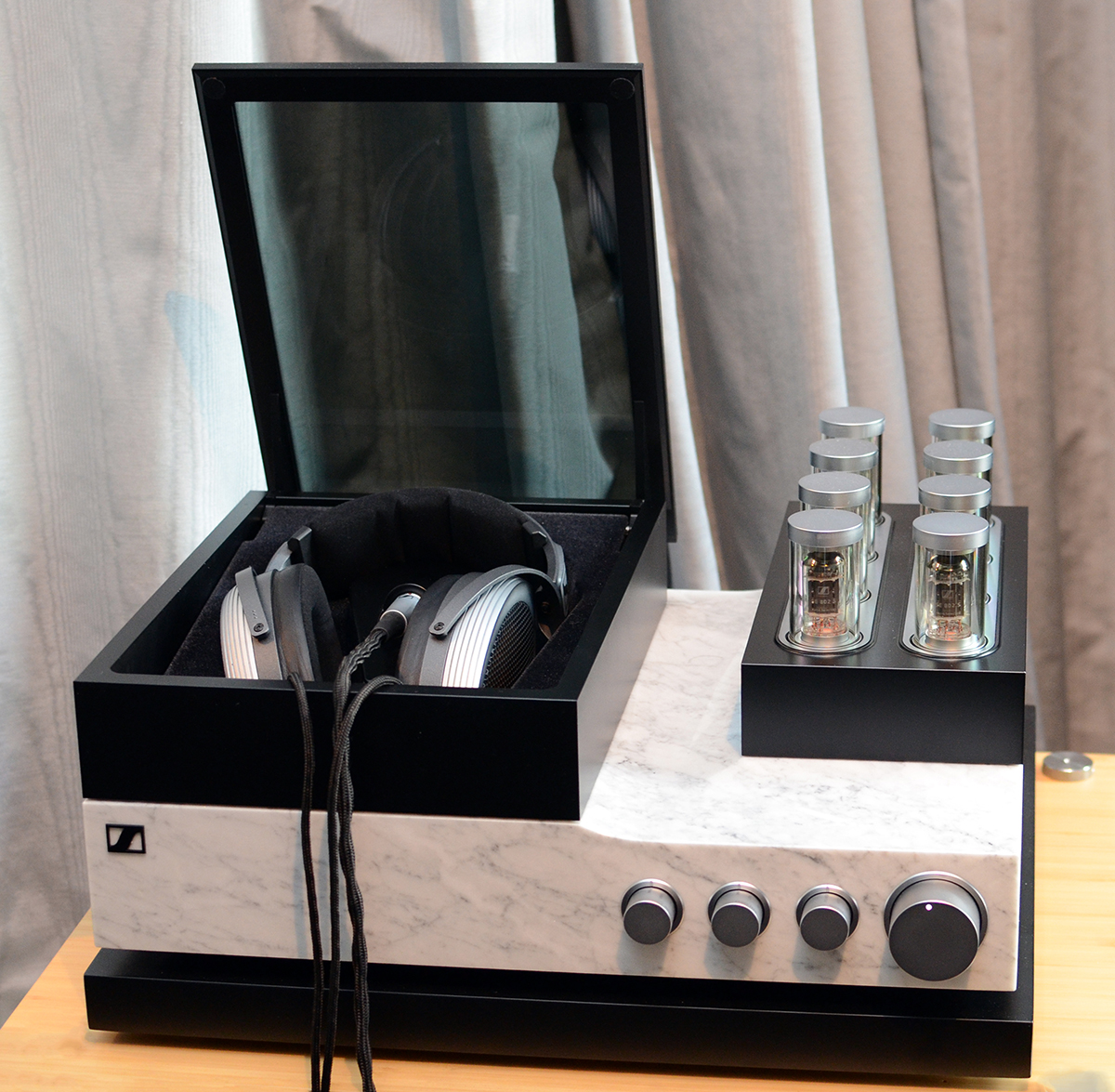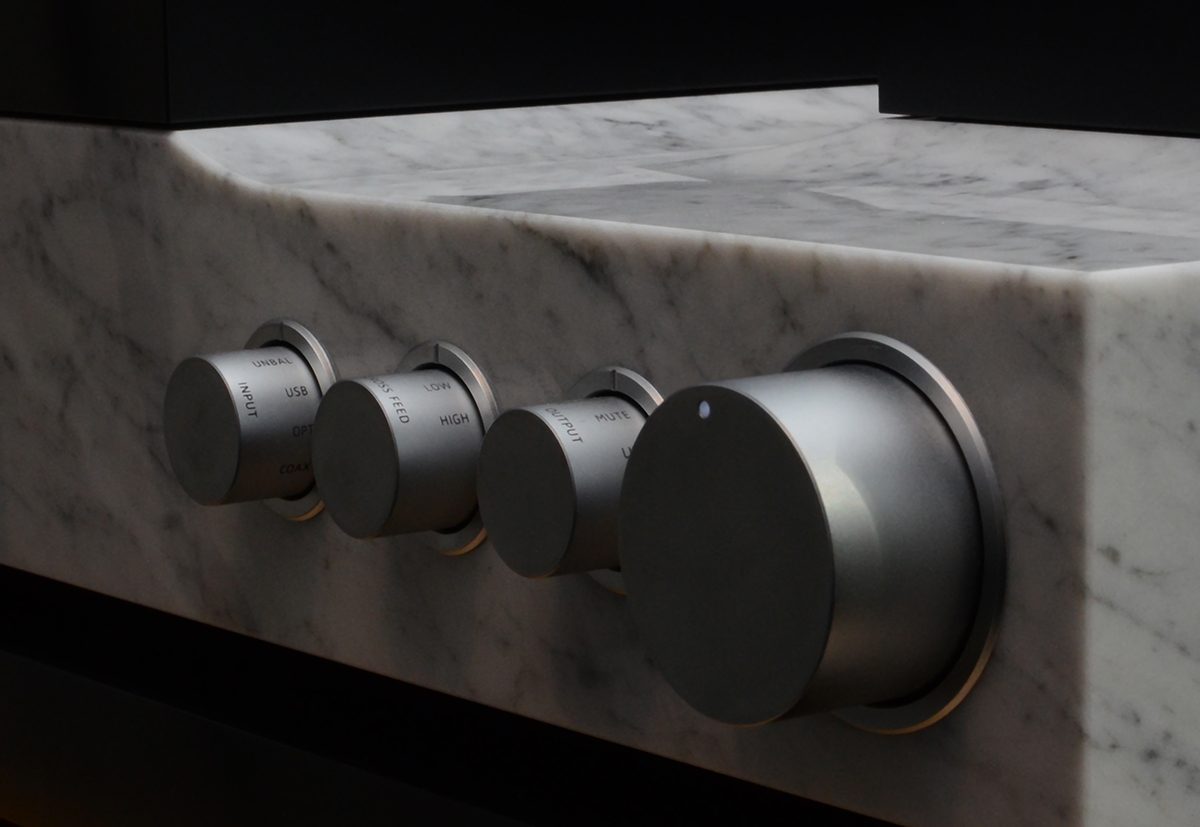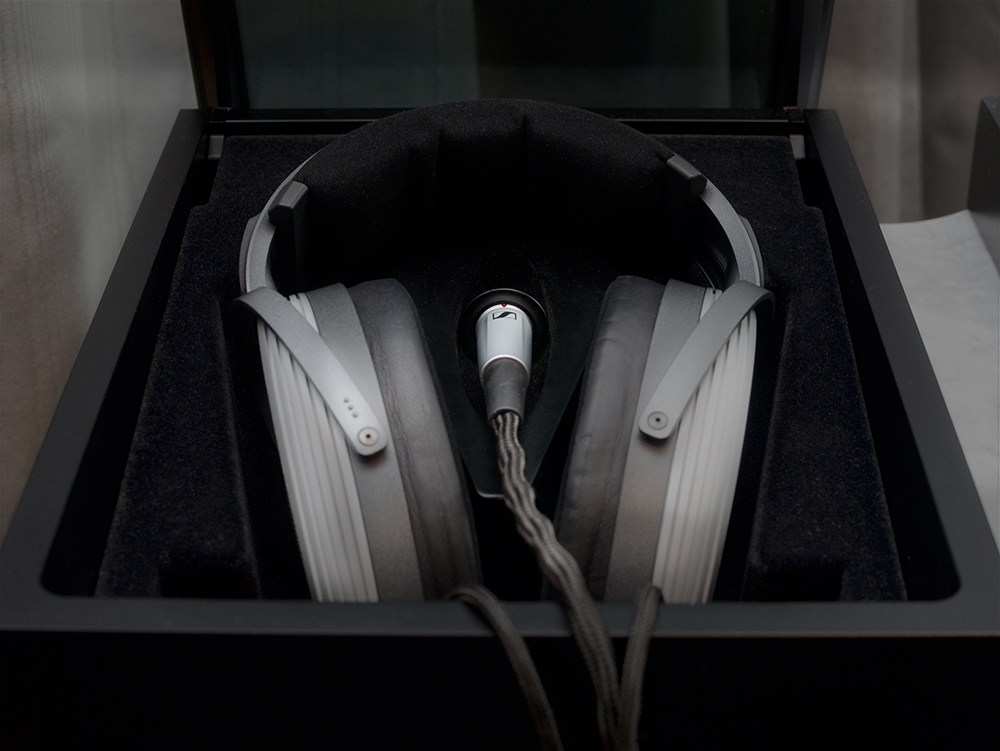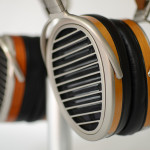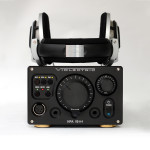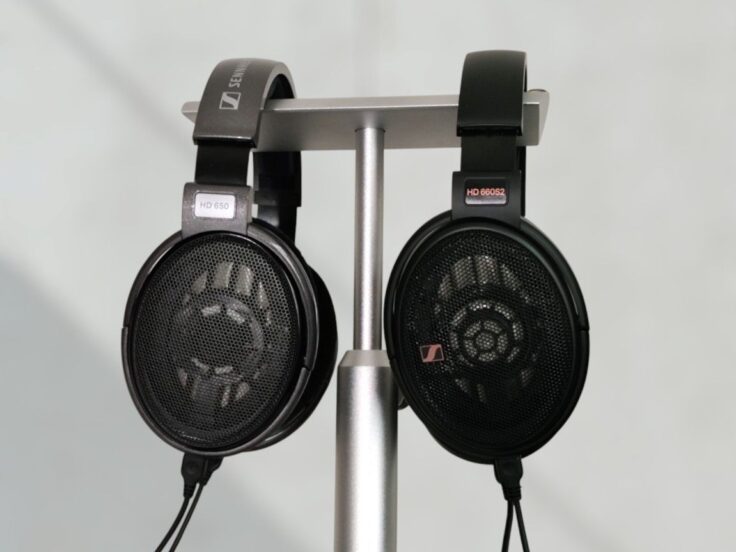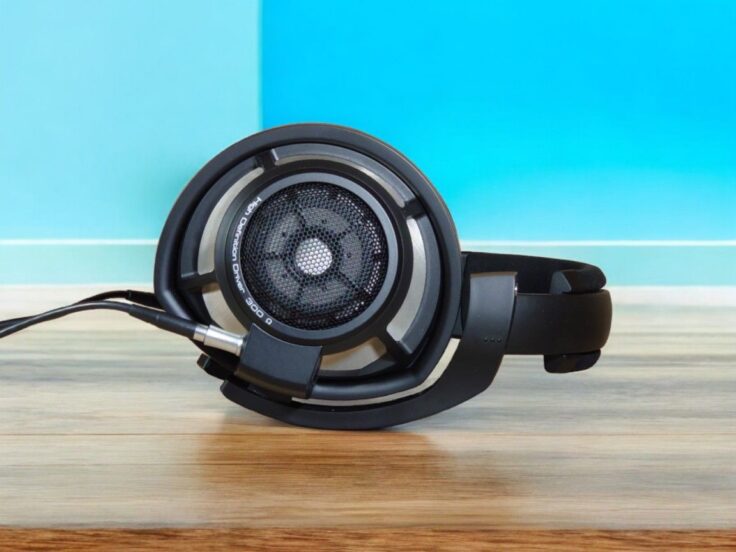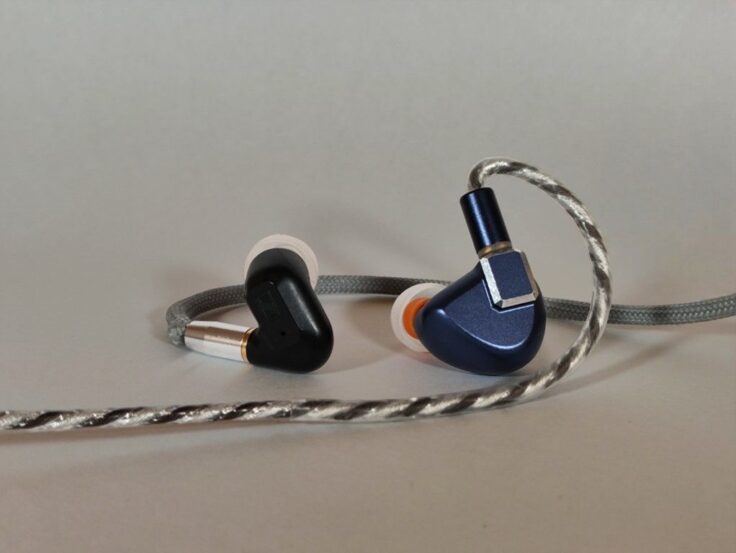The Sennheiser HE 1 is the most expensive headphone setup in the world, except from a few offerings that includes gold and diamonds. It is Sennheiser’s ultimate statement product, priced in the league of a quite nice car. It is the new “Orpheus”, inspired by the legendary HE 90 which was launched in 1991.
For reasons unknown, Sennheiser never sent a review unit to the Headphoneer headquarters. However, I got the chance to sit down with the Sennheiser HE 1 system in peace and quiet somewhere else. Five hours of effective listening time, spread over three sessions over five days. Conditions were great: The rig was in a quiet and dedicated room, I was alone, using my own carefully selected music and the electronics connected were first class. Even the chair was comfortable. Before and after the sessions I listened to other top range headphones in the neighbouring room with the same music, and of course, I spent time at home between sessions with my own flagship headphones and amplifiers, still with the same music. However, review wise this was still not ideal. I am a big fan of A/B, side-by-side comparisons. I prefer getting to know a product for a longer period of time, then comparing it to relevant products in my collection. But this time it wasn’t possible. However, I think I spent enough time with the HE 1 in good enough conditions to write something sensible about it, more than just the usual “Wow! It’s expensive” and “Wow! Great sound!” Hence I dare call this a “review”.
The Build
The HE 1 is both an amplifier and a headphone, only to be used with one another. It also has a built in DAC. HE 1 is Sennheisers only electrostatic headphone, and the amp is their only product that uses vacuum tubes. It is also the only amplifier made by a block of marble. I’ll leave it to other writers and Sennheiser to elaborate on the fancy interior details, I’ll focus on the stuff that matters in the end: How it feels and how it sounds. The HE 1 is a luxury product and it looks like one, it feels like one and of course is priced as one. But it also looks and feels like a very well engineered and thought-through product. The fancy rising tubes and withdrawing knobs sure adds some moving parts, but it also makes the amplifier less vulnerable to being damaged when not in use. But my favorite design feature is the built in headphone storage box with an internal headphone connector. I have thought about this for years – why cannot headphone manufacturers actually ship their flagship headphones in boxes that you can use for everyday convenience? Where there is room for the headphone, the cable, and there is a hole for the cable that makes it possible to keep it connected while still in the box? Well, seems like someone finally did this, and it is great. To bad it costs the same as a nice car.
The cable is similar to the HD800’s, but thicker. The shape and feel of the headphones themselves is great. They are not very light, but ergonomics and clamping force is just perfect. I wore them for more than two hours, with no need to take them off or move them around (I usually do that). They are very comfortable. Only strange thing about them is that they actually get a bit warm. This is because Sennheiser moved some of the amplification into the headphones themselves. It wasn’t anything I thought about when wearing them, but it felt a bit unusual to the touch. But hey: Headphones with heatsinks, how badass is that!
The Sound
It is with some awe that you sit down and listen to the HE 1 for the first time. I’ve heard enough high end stuff by now not to easily get blown away. I didn’t expect to be this time either. I expected it to be great, but I also expected it to be a headphone. And I wasn’t let down: It sounds like a headphone. But what a headphone!
What greeted me was a very warm and organic sound. Actually my first thought was “This sounds nothing like the HD800….” First, there was nothing potentially overly bright, cold or clinical sounding about it in any way. It felt extremely detailed, but in a subtle, almost understated, way. There was loads of texture and timbre to each tone from every instrument. Second, It didn’t sound as wide open as the HD800. But it still had superb separation, in a softer and more natural and intimate feeling way.
Track by track
As I already mentioned, I was not able to do any immediate side by side comparisons of the HE 1 with other headphones. But still, I chose to write down my listening impressions track by track, as I like to do in all reviews. Most of these notes were taken at my second, and longest session with the HE 1.
Molvær – Merciful: The female vocals are warm, intimate and rich. No sibilance. Her breath is something to be subtly sensed in between phrases. Piano is warm and rich. Soundstage is intimate.
Molvær – Dead Indeed: The trumpet is warm, full and rich sounding. No dryness. The onset of the “full orchestra” at 1:58 with various percussion, bass, other small bits of sampling, is astonishingly great. It all has a tactile feel. And it sounds warm and intimate. The bass that sets in at 3:12 is very deep and powerful.
Ensemble Modo Antiquo – The Young Vivaldi (track 1 and 2): The sound of the strings is airy yet full bodied, textured, full of timbre. Great sense of attack, very dynamic. Tonality feels perfect. The strings really has this fabulous engaging playfulness to them. Separation is great, but not to the extent that it feels artificial. The soundstage is intimate, which suits this chamber music piece greatly. I notice stuff I never heard before, plucking noises from the musicians etc. But not in a bothering way, just right, just like you experience in a live performance.
EST – Viaticum: The opening bass is so tight, solid and full that I get a bit set off. Piano is warm, clear and crisp but not too bright. Percussion is detailed and snappy, but not unpleasantly hard or bright in any way. Again the soundstage is intimate.
H-Alpha – Red Sphere: The bass drum really has this tactile feel only the best planar magnetic headphones can match. The shrieking, moo-ing saxophone sounds are just strangely pleasant. Smooth but still offensive, or vice versa, it is an experimental piece. All the rattle in the background comes through in this lovely balanced way. The bass drum hits hard and with full body, yet greatly textured. This is not the stereotype of tight bass. It’s tactile and fun.
Hahn / Higdon – Fly Forward: Great. The trumpets in the opening are so wonderfully textured. All the small subtle nuances are beautifully presented. Not up front in your face, but as a part of a whole, just like with live music, it’s all there in its own right, for you to discover. Nothing exaggerated or artificial.
M83 – Midnight City: The bass that sets in from about 20 seconds is thunderous and digs incredibly deep. This is a complex track with lots of stuff going on. The HE 1 handles it with an elegant ease I never heard before. It also in a remarkable way manages to avoid any sharp edges to… anything.
Molvær – Solid Ether: The trumpet is so pleasant, so soothing. When the bass “rumbles in” at 3:20 min, I am again struck by the HE 1’s tactile and deep reaching fundament. There are lots of small samples, elements and noises in the background here, they are all easy to separate, but still very easy on the ear. It strikes me that the soundstage is very, very natural. Like in a real concert in a well dampened and intimate concert space.
Radiohead – Sit down: There is this fabulous organic warmth to the electronic sounds in the beginning, Thom Yorke’s voice is beautifully rendered. The bells have this superb round chiming sound. As the track builds up, the complexity is handled with authority, ease and control without ever being harsh. Even the 3 min. crescendo is handled with all its grandiosity with the same ease as everything else. Without sounding harsh nor muffled. This is a real feat!
Tomaz Stanko – Terminal 7: The opening music from the “Homeland”-series never sounded this organic, warm and alive. All the instruments have the right amount of attack, timbre and warmth. Cymbals shimmer without overly brightness, the overtones and artifacts from Stanko’s trumpet is rendered in a balanced way, never too bright. Never distorted.
Tom Waits – Georgia Lee: I get a bit offset by just how smooth Tom Waits voice comes through here. Wow. It’s like melted butter. Relatively speaking, of course – it is still Tom Waits. The many creaking and squeaking noises from the piano and accordion are very audible, in a pleasantly present way. Other ultra detailed audio systems can make such background sounds too obviously there. But not here. It’s just some extra spice.
Tord Gustavsen – Graceful Touch: I keep getting these experiences in the opening of familiar songs, like with Tom Waits’ voice. This time it’s Tord Gustavsen’s piano. The title “Graceful Touch” never was more appropriate. This is truly smooth, silky, silky buttery smooth with no sharp edges, but all the nuance. The organic flow of the piano is breathtaking. It’s pure like water. Even the harder piano tones around 2:30 is just shy of being unpleasant. They have the right amount of attack, but never cross the line.
Lamb – Lusty: Oh, the bass. Tight and round, full and textured. Deep. The female vocals is so delicious. All the percussion is precise but not hard or harsh. Nothing sticks out that isn’t supposed to. The hammering samples at 2:49 minutes are delivered with attack, body and a tactility I never heard before.
Lamb – God Bless: All the tinkling sounds in the opening has this great beautifully balanced tonality, as with the female vocals. The bass setting in again reveals this delicious bloom that just makes me smile.
Lamb – Zero: Nice quiet piece with a few strings and female vocals. The flow of the vocals is stunning. Strings are crisp and textured in a warm natural way. The vocalist’s voice is like honey. Strings are like you can reach out and touch them, feel their vibration. But it’s not smoothed down all the time, when called for at the 2:45 mark it bites, strings become really crisp, full of attack. But as always without becoming too much, no annoying harshness, just almost touching it.
Comparisons
Let me make it clear first of all: I had nothing in the price range of the HE 1 to compare it to. But I had access to what normally is considered great headphone setups in the “not-insane” price range. Hopefully my comparisons will give the reader a feeling of how the HE 1 sounds like. *
After the first session, I immediately listened to the HE-1000 on the very neutral amplifier Moon 430HA. The soundstage felt much more open, but at the cost of intimacy, warmth and that special tactility I felt with the HE 1, especially in the lower regions. I tried out several other high end cans, and the impression remained. There was this tactile feeling the HE 1 has that no other headphones gave me. The headphone available that gave me the most similar soundstage to that of the HE 1 was the LCD-X.
After the second session, I went home and did a full round with my Stax SR-009/SRM-007tII setup. Keep in mind, however, that this comparison is made based on my memory, something I normally avoid. My ears were still tuned into the signature of the HE 1. Going from a headphone to another can always result in this kind of acclimatization effect. Further, the second session was really when I “fell in love” with the HE 1. So, coming home to my Stax rig, I was not really in the mood for anything else than the Sennheiser. But for the dedicated reader, here is what I noted while listening to some of the same tracks with the SR-009 as I heard on the HE 1 the earlier on the same day:
EST – Viaticum: The bass is nothing like I remember the HE 1. Especially in quantity, but also in quality. It is much more in the background, which makes the experience very different. Soundstage is similar, however, but a bit more open with the Stax, probably because it is notably brighter sounding.
H-Alpha – Red Sphere: The bass drum isn’t anything close to how I remember the HE 1. However, there is lots of detail, great separation. Everything feels very precise. But it feels a bit too bright, too thin. Especially since the bottom end is lacking in comparison to the Sennheiser. The tactile feel just isn’t there in the same way. The music has a great detail level but not with the body it should have. It sounds more distant and thin.
Hahn – Fly Forward: The strings are textured, fast and detailed. Yet, the body they had with the HE 1 isn’t there. But strings aren’t where the SR-009 diverges the most.
M83 – Midnight City: The SR-009 really does a nice job. But the bass quantity and shear “push” just is not there. Otherwise, separation is good, image depth quite equal.
Molvær – Solid Ether: The trumpet is a bit thinner sounding. The bass is remarkably less present to how I remember the HE 1. Everything feels brighter, less real. Less of that natural flow.
Basically, the most important difference is that the SR-009 doesn’t have the same amount of bass as the HE 1, and it is brighter. Thus it sounds thinner and more distant. It also sounds less organic and intimate. I must say, however, that I generally like the SR-009 a lot, and just because the HE 1 made me look at the SR-009’s weaknesses with a magnifier glass, doesn’t mean the SR-009 is a bad headphone. It is still world class, and a cherished part of my collection. Another important point is that Stax just released its long awaited new flagship amplifier in the form of the STAX SRM-T8000, that will hopefully make the SR-009 perform better in the areas where I found it a bit lacking.
There are also third party amplifiers made for Stax headphones. Enthusiasts persistently claim that many of these will bring the SR-009, and also the SR-007, to significantly a higher level than the current line of Stax amps. I do not have the experience with these amplifiers to comment on that, but among them are offerings from Woo Audio, Cavalli Audio and Ray Samuels, as well as HeadAmp and Mjolnir Audio. The last two producers offer amplifiers based on designs made by Kevin Gilmore, who has been inspired by the highly regarded vintage Stax T2 amplifier. Hopefully the new SRM-T8000 will be in the same league. *
I kept thinking while listening to the HE 1 that it most of all reminded me of a well amplified Sennheiser HD650. On steroids. With a very much more elaborate bass that doesn’t roll off at all. Like a hyper-detailed version of the HD650 with the detail level of the 009 and the bass grip and depth of the LCD-2 or 3. So what’s left then from the HD650? The midrange smoothness and the intimate soundstage. And sure enough. When I plugged the HD650 into the best amp I have, the lovely EAR HP4, I get a sound signature way closer to the HE 1 than I got with the SR-009.
Plugging in my beloved LCD-2 rev.1, I start to find some of the deep bass performance I remember from the HE 1. But the HE 1 has more midrange bloom as I remember it. The tactility still isn’t the same, obvious amongst others with the M83’s “Midnight City”.
Then I try the LCD-X. It gives me the closest bass experience to my HE 1 memory. Deep, extended, with some mid-bass slam that gives you that tactile feeling. The soundstage also is intimate in a similar way to the HE 1. Moving on to the LCD-3, I really start to feel I am getting somewhere. There are similarities in bass performance, midrange smoothness and soundstage intimacy. A soundstage that gives you more depth than height and with.
I ended my evening session with the HD800. It has indeed much less bass presence and it is way brighter than the HE 1. The HD800 has more in common with the SR-009, sound signature-wise. But the HD800 has its legendary wide open soundstage. No-one can take that away from the HD800. Not even the HE 1.
I want to finish this section of comparisons by going back to the Sennheiser HD650. I kept returning to it in my thoughts when I tried to figure out how to best describe the Sennheiser flagship. And weeks after, when played relatively loud, the HD650 still was the headphone that was the most similar to my memory the HE 1, of course ignoring the obvious lack of extreme refinement and deep bass presence.
Now, the reason that the Sennheiser HD650 has gotten so much love from so many headphone enthusiasts is because of its smooth, warm sound signature and slight mid bass emphasis, a sound signature often referred to as “musical”. As a HD650 lover, I am delighted to say that in my ears the HE 1 is a perfect HD650. It is the HD650 of my dreams, bringing absurd clarity and all the deep bass you can handle in the same type of warm, smooth and delicious presentation.
My fellow HD650 lovers will know what I am talking about. But the HD650 is also a polarizing headphone amongst enthusiasts, some call it “laid back” or “veiled”. These people probably think I am far off now. So just to be clear: What I am saying is that HE 1 takes what is good from the HD650’s presentation and makes it even better at the same time as it removes absolutely all of its shortcomings.
To me the HD650 first of all is a musical, smooth and non-fatiguing headphone. It’s about the music. And thus, it is very encouraging that when Sennheiser sought to make the best headphone possible without thinking about cost, it’s still all about the music, not about showing off. Because that’s what true hifi should be all about.
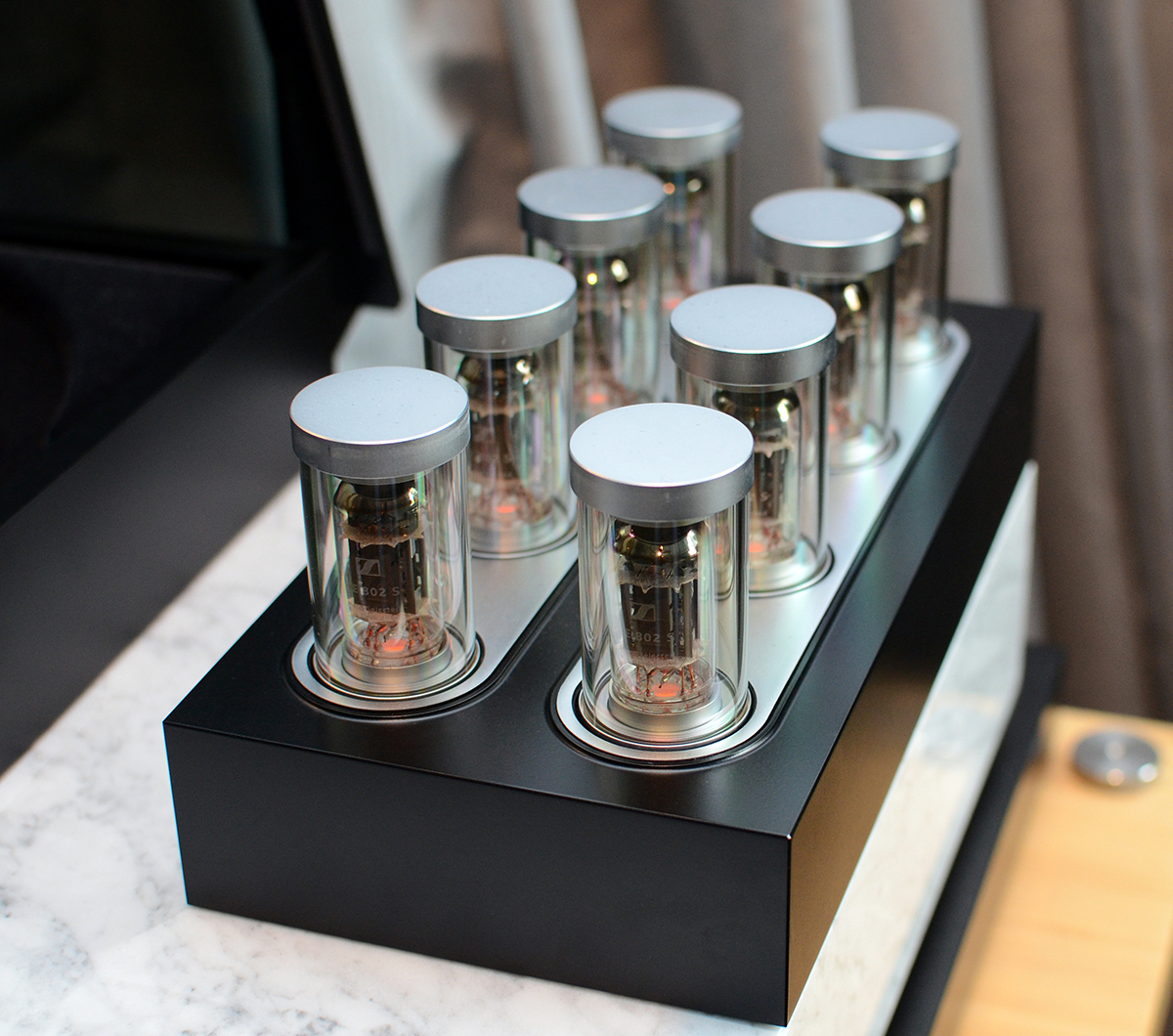
Final Session
After a weekend of listening to a variety of headphones from my own collection, I return to the HE 1. Maybe I am tired of my test music, maybe the wow effect is wearing off. Or maybe it is because I an hour earlier had a brief “wow-experience” with the Focal Utopia and an amplifier I hadn’t heard before (but hope soon to review).
The HE 1 still sounds great, of course. It is as I remember it, but I am neither floored, nor brought almost to tears as I was in my second session. I sneak out and listen to the SR-009/SRM-007tII rig that’s on display in the adjoining room, and it is actually quite nice today in direct comparison. I am probably just having a “bright day”, preferring brighter more open sounding headphones. I begin to realize that one of the main differences between most headphones and the HE1 is that I simply can play louder without fatigue, hence the massive perceived difference in bass impact and tactility. I assume the low distortion and ear friendly sound signature of the HE1 simply just is easier on the ear.
I finish my last date with the Sennheiser HE 1 with Nils Petter Molvær’s gentle “Kakonita”. This brings me back in mood to appreciate the true greatness of Sennheisers marble palace of a headphone system. So much deliciousness in a single trumpet. I am almost shedding a tear again. But I have to go to pick my kid up from kindergarten. I catch myself in a brief daydream – imagining a future in which he ends up inheriting my HE 1.
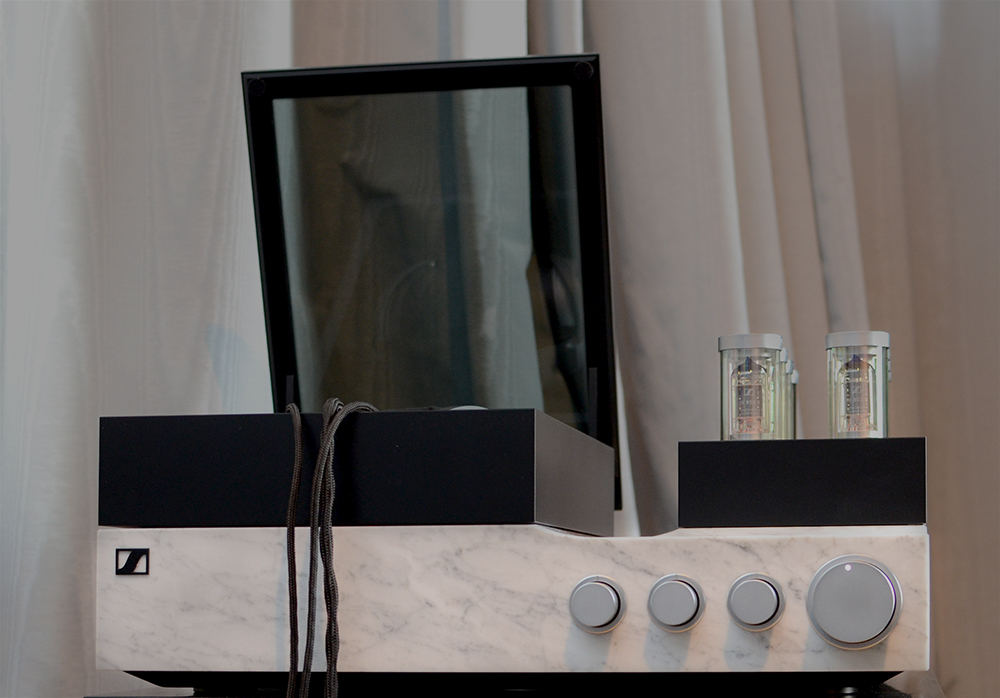
Conclusion
The Sennheiser HE 1 is delicious. It is warm and inviting, it is rock solid and tactile, it is nuanced and hyper-resolving. It has an extremely ear friendly sound signature, and a fabulous bass experience. It is the best headphone I have heard. If you have the means and wish to spend this amount of money on a hi-fi rig, but is better suited with a headphone setup than with speakers, I see no reason you shouldn’t get it. You can get very close for a lot less, but for some that just doesn’t matter.
For the rest of us, not able or ready to spend this quite extreme amount of money on a headphone rig, we just have to live with the second best, and hope that Sennheiser will make use of the technology from HE 1 in more affordable offerings.
Final thoughts
It took me some days, or maybe weeks, to get over the HE 1. But sooner than I expected I went back to fully enjoying my own stuff, both the high end and not so high end. I have no problem imagining a happy and fulfilling life as a headphone enthusiast without ever listening to the HE 1 again. It was a great experience, and anyone who gets to own it is a lucky person. But the alternatives, that most people can actually buy, are so good. Not all the way up there, but what matters is enjoying great music.
A couple of weeks after my sessions with the HE 1, I went to this great jazz concert, an all acoustic event with Helge Lien Trio. While sitting there in the front row, tapping my foot, I couldn’t stop thinking about the HE 1. This was how listening to Sennheiser HE 1 felt. Alive and close. I also reflected about its soundstage, which is not as immediately impressive and hyper realistic as some other headphones can be. To me, this has to do with the following: Instruments recorded in mono and mixed in stereo will always sound more pinpointed in a good stereo system than in a real life performance. Treble intensive headphones can further exaggerate this effect. But the HE 1 is not among those. The sound signature of Sennheiser’s flagship, with its full bass, warm mids and sweet highs, really makes for a “true to life” experience. Like the one I had on the first row in that jazz club.
Associated Equipment
Burmeister 089 CD player (analog output)
Nordost Frey 2 XLR and power cables
ISOTEK EVO power conditioner with Isotek Syncro.
Thanks
I want to thank Oslo Hi-Fi Center for letting me spend time with the Sennheiser HE 1.
Updates: May 15 th 2017 – Added a few remarks (*)


